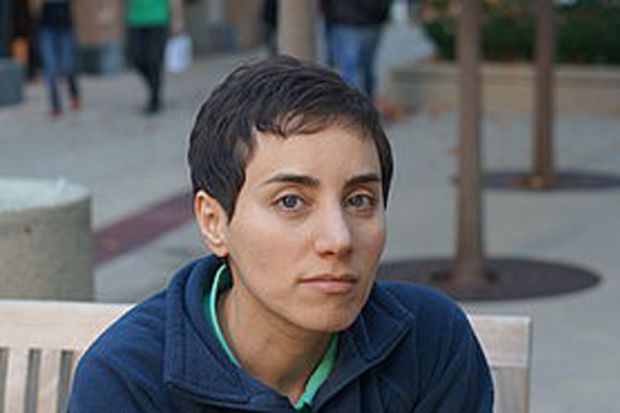Many women have to overcome subtly negative assumptions made by people who still don’t take them quite seriously
At a ceremony in Seoul last week, Maryam Mirzakhani, professor of mathematics at Stanford University, became the first woman in history to be awarded mathematics’ highest honour, the Fields Medal.
Established in 1936, the medal is presented by the International Mathematical Union in recognition of truly outstanding work undertaken before the age of forty. Up to four medallists are chosen once every four years – a total of 56 medals have been handed out so far. So why has it taken almost 80 years for a woman – Mirzakhani, who has a doctorate from Harvard University but was born and educated in Iran – to become a winner?
Winning the Fields Medal is something akin to winning a string of Olympic golds, or being Wimbledon champion several years in a row. It takes that level of brilliance, that level of total dedication and determination.
You need, of course, to be born gifted; you need to have your talent recognised and nurtured. Then you need to get yourself a top-class education and to train with people at the very top of their field; and finally, you need to apply your brilliance and knowledge with courage and immense perseverance.
To answer the question as to why Mirzakhani is the first woman to win this coveted prize, we have to look back into history. Two hundred years ago, or even more recently, girls who liked mathematics had to study their brothers’ books when they were supposed to be asleep, and had their candles confiscated if they were caught. Mary Somerville (1780-1872) and Sofia Kovalevskaya (1850-91), for example, both had to study in secret. One hundred years ago, girls from a privileged elite might just have got into university, but no one expected a woman to have a serious career – although a few, like Dame Kathleen Ollerenshaw, who died on 10 August this year at the age of 101, did.
In 1948, the University of Cambridge finally deigned to give women degrees, but pockets of discrimination persisted even into the 1960s. And although some professors were, to their credit, immensely supportive, others were downright and openly sceptical that a woman could ever do top-level maths.
So the generation of women born after the Second World War and currently reaching retirement is really the first in which aspiring mathematicians have been able to pursue their chosen career without institutional obstacles in their path.
Combine this history with the level of concentration that is needed in those precious twenties and thirties – the years in which most of us want to be building a family, the years of juggling the demands of two careers in a discipline that may require relocating anywhere in the world, perhaps with a husband, who may, or may not, consider his wife’s career as important as his own. It then becomes a little clearer why it is that women have lacked the support networks, the role models and the contacts that most people need to get to the very top.
In addition to these practical obstacles, many women have to overcome subtly negative assumptions made by people who still don’t quite take them seriously. All this adds up to barriers to all but the most determined.
Many women of the post-war generation have succeeded spectacularly in their chosen career. It is remarkable that Mirzakhani was presented with her medal at the International Congress of Mathematicians in Seoul by Park Geun‑hye – the first female president of South Korea – and Ingrid Daubechies, the first female president of the IMU. (Daubechies, by the way, is the person who developed the mathematics that transformed digital signal processing and fingerprint recognition into practical realities.)
So Mirzakhani is the right woman at the right time. Born with an exceptional gift for mathematics, her talents have been nurtured and allowed to flourish, her teachers have recognised and fostered her genius, and her male colleagues have not questioned her ability in a subject where raw brain power is what brings the most respect.
The tectonic plates have shifted, and female mathematicians have finally come of age.
Register to continue
Why register?
- Registration is free and only takes a moment
- Once registered, you can read 3 articles a month
- Sign up for our newsletter
Subscribe
Or subscribe for unlimited access to:
- Unlimited access to news, views, insights & reviews
- Digital editions
- Digital access to THE’s university and college rankings analysis
Already registered or a current subscriber? Login





